We all take freshwater for granted, but we shouldn’t. Based on the World Wildlife Fund (WWF), by 2025 two thirds of the global population may experience water scarcity.1 And that’s because of global warming-driven droughts.2 Supply cuts are looming in the Southwestern US3and water is fueling wars across the world. So, how can we get out of this deep water? There’s a sea of desalination technologies coming up. Like solar domes in the desert4 or nano-membranes making seawater drinkable in minutes.5 Let’s take a look at how nanotechnology could help contain the fresh water crisis.
What’s tapping water out?
Before diving into the wellspring of fresh nanotechnologies, let’s zoom in on the water crisis just for a minute. It helps to give context for why this could be transformational. With climate change, many regions are experiencing higher temperatures and lower rainfall. This is a lethal combination that dries out our water reserves. A typical example of this is the southwestern United States. Over the last 20 years alone, the average temperature in some regions of the Southwest increased by up to 2°F (ca. 1.11°C).6 To add to that, since 1990 the entire region has become drier because of moderate to severe droughts. Based on a 2020 study7, this trend was caused by the first climate change-driven megadrought hitting the southwestern states. Researchers found this to be the second driest spell affecting the region in the last 1,200 years.8 What’s happening here is happening in other areas of the world too, but it shouldn’t be a surprise.
But how is this affecting our water resources? 40 million people living across seven southwestern states rely on Lake Mead for freshwater supply.9 That’s where Las Vegas gets 90% of its water from. Created by blocking the Colorado river with the Hoover Dam, Lake Mead is also a hydropower plant, generating enough clean electricity for 8 million Americans.10 While still being one of the largest water reservoirs in the world11, this massive pool is getting emptier by the year. The Colorado river’s flow dwindled by about 20% compared to the last century.12 And it may shrink by up to 31% by the middle of this century.1314
But it’s not just the lack of water falling from the sky causing this shortage. Scientists revealed higher temperatures are playing a key role. As the region is warming up, snow is disappearing from the Colorado Rocky Mountains. The snow-free patches absorb more sunlight and become hotter, which causes more water to evaporate from the land and to be given off by plants. All of this means a lower amount of water will make its way towards the river eventually reaching the lake. After dropping by 140 feet (ca. 44 meters) since 200015, last June Lake Mead’s level hit the bottom … well, not literally thankfully, but it was a record low and it’s still expected to continuing dropping over the next few years. You can actually see a visible sign of the lake drainage.16 A Statue of Liberty-high pale fringe all around the lake shoreline. This is usually called a “bathtub ring” phenomenon.17 The lake is now at just 36% of its full capacity. And what’s even scarier is that it’s only 200 feet (61 meters) above the so-called “dead pool” level,18 which is when water can no longer come out of the dam. So this affects not just drinking water, but generating electricity.
But which are the most thirsty culprits for water scarcity on a global scale? If you’re thinking about cutting down on drinking water … don’t bother. Keep gulping your gallon of water per day. Drinking, washing, and toilet flushing combined only accounts for 8% of our yearly freshwater consumption.19 Instead, the elephant in the…pool…is actually irrigation for agriculture, which drinks up to 70% of our freshwater use. The average water footprint of a single California almond is 12 gallons (ca. 54.5 liters).20 That’s just nuts. Whenever we buy a product, whether a can of soda, a cup of coffee, or t-shirt, there’s a water cost to add to its price tag. However, when you compare all these to meat, they’re just a drop in the bucket…1 Kg (ca. 2.2 lbs) of a common cattle feed like alfalfa takes about 510 liters (ca. 112 gallons) to grow. Whenever you eat a quarter-pound hamburger, you’re technically flushing it down with around 1,650 liters (ca. 363 gallons) of water.
Cutting water with a knife
So, what’s the result of all this water consumption? For Lake Mead, it’s a lower energy production, with the Hoover dam energy efficiency dropping by 25% after reaching its lowest water capacity.21 And of course, there’s less water available for people in the Southwest to use. Last August, the US government officially declared the first ever water shortage for Lake Mead.22 This will cause cuts in water supply, with some farmers who may be forced to give up on the cultivation of their land. Arizona will lose the biggest slice of the Colorado pie, which amounts to just about 8% of its national water usage for agriculture and human consumption.23 24 That’s why the state is considering the construction of a desalination plant on the Sea of Cortez in Mexico.2526
Based on the UN World Bank, drought could drive 700 million people out of their homes by 2030.27 Such a massive climate migration could brew up political instability across the globe. And it’s already happened.28 The Pacific Institute put together a log of 925 water conflicts since the Babylonian civilization.29 They concluded that most of the wars were agriculture-related.30 And research showed water-based conflicts increased around 5 times over the last 100 years.3132333435
Stemming the tide of water crisis
So, what can we do to get out of this? This is where technology comes in. With surface freshwater running out and underground pools being expensive to get to, everyone is diving into the seawater, which makes sense being 97% of the Earth’s water resources.36 Desalination plants have increased exponentially over the last 40 years.37 However, the conventional technique, called reverse osmosis (RO), has some limitations. I’ve already talked about the way it works in another video, which I’ll link to in the description, but let me give you a quick refresher. Basically, you push seawater through a semi-permeable membrane that traps the salts while letting the pure water go through it. Simple, right? Yes, but energy-demanding. And typically, you would burn fossil fuels to get the high pressure you need to make it work. This translates into 76 million tons of CO2 per year emitted by desalination plants worldwide. Which will skyrocket to 500 million tons of CO2 per year by 2040 if we don’t find a low-carbon alternative. But there’s another environmental cost to add to that. The RO process by-product is a highly concentrated salt solution, a.k.a. brine, that’s currently dumped into the ocean. Being heavier than seawater, this slurry settles into the deep waters and the salt overload consumes oxygen38, which kills marine wildlife. An RO plant could produce up to two liters of brine for every liter of clean water.39 According to a recent study, its production is 50% higher than what was previously estimated.40
But someone is trying to water down those environmental impacts. Accounting for 22% of the global brine disposal41, Saudi Arabia is working on a greener and cheaper desalination technology. Listed in the top 9 places that will suffer from water stress by 204042, the Saudi country is planning to quench its citizens’ thirst by turning the Red Sea into a freshwater supply source. As part of their NEOM project, they asked Solar Water Plc to develop the first-ever solar dome.43 This innovative design is based on concentrating solar power (CSP) technology.44 Essentially, you have many large mirrors that focus sunlight onto a glass semi sphere. Doing so, a localized greenhouse effect will vaporize the seawater contained within a metallic giant pot. You then pump the steam out and condense it into clean water. Based on the developers, the plant will entirely rely on solar energy, which means being carbon neutral.45 But there’s still the question of the waste brine. Their plan is to extract salts for lithium battery components or grit or fertilizers. But there’s some big question marks around this, so it’s probably good to remain a little skeptical there. Some of these questions will be answered by the pilot plant, which is expected to be finished by the end of 2022.46.
But solar domes aren’t the only alternative to RO. There’s also new materials being used for membrane distillation, which is more energy efficient. Now, I’m not a scientist, but from our research on this, membrane distillation is where a micro-porous membrane is used to separate two solutions at different temperatures. In this case, salt water and fresh water. The temperature gradient on the membrane creates a vapor pressure difference allowing the water vapor to pass through the membrane and collect on the other side.4748 Korean engineers designed a nanofiber membrane that desalinates seawater with a 99.99% efficiency.49 Using a polymer as a core and silica gel as a shell, they made a composite membrane through a process called co-axial electrospinning. Hang with me here because this will make your head spin. In this setup, you have two separate coaxial syringes feeding two fluids into a nozzle. When applying high voltage to the system, you create an electrostatic field between the tip of the nozzle and a nearby rotating collector plate. As the droplet comes out of the nozzle it stretches out, turning into a filament that’s collected onto the rotating surface. You end up with a nanolayer of material.50 51 Thanks to their outstanding water repellency, these electrospun membranes don’t get wet. That’s a huge plus since wetting has been a major challenge for the membrane distillation process. Once a membrane gets fully wetted, you’ll have salts sneaking into the output water. Because of this reduction in separation effectiveness, you’ll need to replace the membrane.52 Based on their tests53, the research group achieved a stable water distillation over 30 days. This is a significant improvement in terms of operational performance as similar membranes start losing efficiency after about 2 days. According to the study’s lead author, these novel membranes show promise for commercialization and could help mitigate the freshwater crisis. However, it’s important to note that this has only been tested at lab scale so far.
In a similar realm, there’s another composite membrane that could save a huge amount of precious freshwater. EnergyX has recently raised $20 million to develop its direct lithium extraction (DLE) technology.54 Currently, most of the world’s lithium is extracted from South America salt flats. The way you do it is drilling a hole to pump out a metal-rich brine and leaving it to evaporate in ponds for months. Doing so, an enormous amount of water is lost. It’s estimated that you need 500,000 gallons (1,892,706 liters) of water to make just one ton of lithium. That’s enough water for 3,500 people for one year.55 In Chile’s Salar de Atacama, lithium mining takes up 65% of the region’s water. Which is crazy if you consider that local farmers need to get water delivered from elsewhere.56 But EnergyX’s lithium ion transport and separation (LiTAS™)57 technology could dilute the amount of freshwater used by conventional ponds by 95%. The startup uses a polymeric support to hold together highly selective metal organic framework (MOF) nanoparticles. MOFs can be tailored to specific shapes and patterns to target your filtering needs. In this case they’re starting with lithium, but it could also be used to desalinate drinking water. The best part is that the system is easily scalable. You can just roll the membrane sheet into a module and link thousands of them together to create the final LiTAS™ unit. EnergyX is planning to start pilot projects for lithium extraction in the coming months58 and we may see their device on the market by early 2023.59 I’ve got an interview with Teague Eagan, EnergyX’s CEO, in another video that you can check out.
What’s on tap for the future?
Water scarcity could be a tsunami for the future of our society. Clearly, we need to focus on the value of freshwater and adopt more responsible consumption. However, the scale-up of sustainable desalination technologies will be vital.
- “Water Scarcity | Threats | WWF.” ↩︎
- “AR6 Climate Change 2021: The Physical Science Basis – IPCC.” ↩︎
- “In a First, US Declares Water Shortage on Colorado River.” 16 Aug. 2021 ↩︎
- “Saudi Neom megacity plans world-first ‘solar dome’ desalination plant.” ↩︎
- “Nanofiber membrane makes seawater drinkable in minutes.” 6 Jul. 202 ↩︎
- “A Closer Look: Temperature and Drought in the Southwest | US EPA.” ↩︎
- “Large contribution from anthropogenic warming to an … – Science.” ↩︎
- “‘Megadrought’ persists in western U.S., as another extremely dry ….” 7 May. 2021 ↩︎
- “Atmospheric Warming, Loss of Snow Cover, and Declining Colorado ….” 29 Mar. 2020 ↩︎
- “The shocking numbers behind the Lake Mead drought crisis – CNN.” 17 Jun. 2021 ↩︎
- “Drought Lowers Lake Mead – NASA Earth Observatory.” 28 Nov. 2003 ↩︎
- “Climate change is drying up the Colorado River, putting millions at ….” 22 Feb. 2020 ↩︎
- “Colorado River flow dwindles as warming-driven loss of … – Science.” ↩︎
- “Colorado River flow dwindles as warming-driven loss of … – Science.” ↩︎
- “Hoover Dam’s Lake Mead Hits Lowest Water Level Since 1930s.” 18 Jun. 2021 ↩︎
- “The shocking numbers behind the Lake Mead drought crisis – CNN.” 17 Jun. 2021 ↩︎
- “Lake Mead Drops to a Record Low – NASA Earth Observatory.” 29 Aug. 2021 ↩︎
- “Running for All the Right Reasons – Outside Online.” 13 Jul. 2021 ↩︎
- “Explained | World’s Water Crisis | FULL EPISODE | Netflix – YouTube ….” ↩︎
- “Water-indexed benefits and impacts of California almonds.” ↩︎
- “Drought impact on Hoover Dam’s ability to generate power – KTNV.” 14 Jul. 2021 ↩︎
- “First-ever water shortage declared for Lake Mead, prompting … – Axios.” 16 Aug. 2021 ↩︎
- “Colorado river shortage – Arizona Department of Water Resources.” ↩︎
- “Lake Mead Drops to a Record Low – NASA Earth Observatory.” 29 Aug. 2021 ↩︎
- “The Southwest’s looming water battle – CNN.” 21 Aug. 2021 ↩︎
- “Management of the Colorado River: Water … – CRS Reports.” 13 Mar. 2020 ↩︎
- “The Drought Initiative | UNCCD – United Nations Convention to ….” ↩︎
- “Drought, migration, and conflict in sub-Saharan Africa: what are the ….” ↩︎
- “Water Conflict Chronology – World’s Water.” ↩︎
- “How water shortages are brewing wars – BBC Future.” 17 Aug. 2021 ↩︎
- “Preventing and Resolving Conflicts Before They Boil Over – NCBI.” ↩︎
- “Water conflict and cooperation between India and Pakistan – Climate ….” ↩︎
- “An update on Yemen’s water crisis and the weaponization of water.” 29 Nov. 2018 ↩︎
- “How water is helping to end ‘the first climate change war’.” 18 Dec. 2019 ↩︎
- “River Nile dam: Why Ethiopia can’t stop it being filled – BBC News.” 8 Jul. 2021 ↩︎
- “Explained | World’s Water Crisis | FULL EPISODE | Netflix – YouTube.” ↩︎
- “As Water Scarcity Increases, Desalination Plants Are on the Rise.” 11 Jun. 2019 ↩︎
- “Dissolved Oxygen – Environmental Measurement Systems.” ↩︎
- “Concerns over increase in toxic brine from desalination plants – BBC.” 14 Jan. 2019 ↩︎
- “The state of desalination and brine production: A global outlook.” ↩︎
- “Concerns over increase in toxic brine from desalination plants – BBC.” 14 Jan. 2019 ↩︎
- “Ranking the World’s Most Water-Stressed Countries in 2040.” 26 Aug. 2015 ↩︎
- “Saudi Neom megacity plans world-first ‘solar dome’ desalination plant.” ↩︎
- “Concentrating Solar Power (CSP) Technology.” ↩︎
- “Life in NEOM – Episode 01 – Water. #LifeinNEOM – YouTube.” 19 Feb. 2020 ↩︎
- “Saudi megacity Neom to build world’s first solar dome desalination ….” 24 Aug. 2021 ↩︎
- Membrane distillation ↩︎
- Emis – Membrane distillation ↩︎
- “Nanofiber membrane makes seawater drinkable in minutes.” 6 Jul. 2021 ↩︎
- “Core-Shell Nanofibers: Nano Channel and Capsule by Coaxial ….” ↩︎
- “The electrospinning process – Science Learning Hub.” 5 Dec. 2013 ↩︎
- “Making seawater drinkable in minutes – Nanowerk.” 29 Jun. 2021 ↩︎
- “Co-axially electrospun superhydrophobic nanofiber membranes ….” ↩︎
- “Direct lithium extraction company EnergyX secures $20M in funding ….” 3 May. 2021 ↩︎
- “Explainer: the opportunities and challenges of the lithium industry.” 2 Dec. 2020 ↩︎
- “The spiralling environmental cost of our lithium battery addiction.” 5 Aug. 2018 ↩︎
- “EnergyX | Energy Exploration Technologies, Inc..” ↩︎
- “Startup EnergyX Has Plans To Revolutionize Lithium Production.” 19 Aug. 2021 ↩︎
- “EnergyX raises $20 million to advance lithium extraction technology.” 3 May. 2021 ↩︎



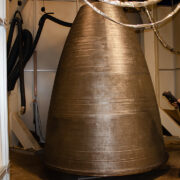



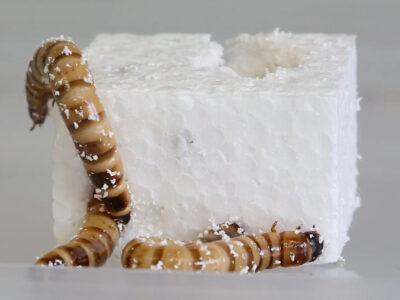
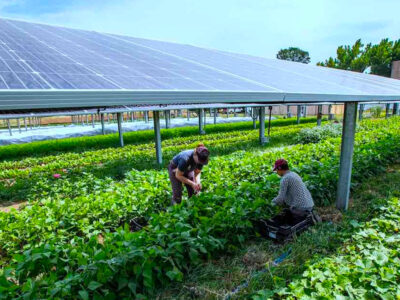
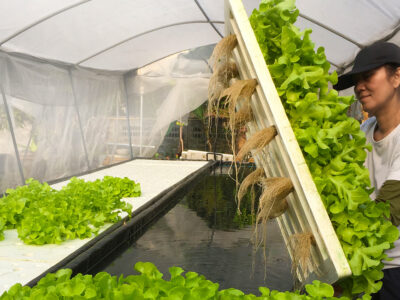



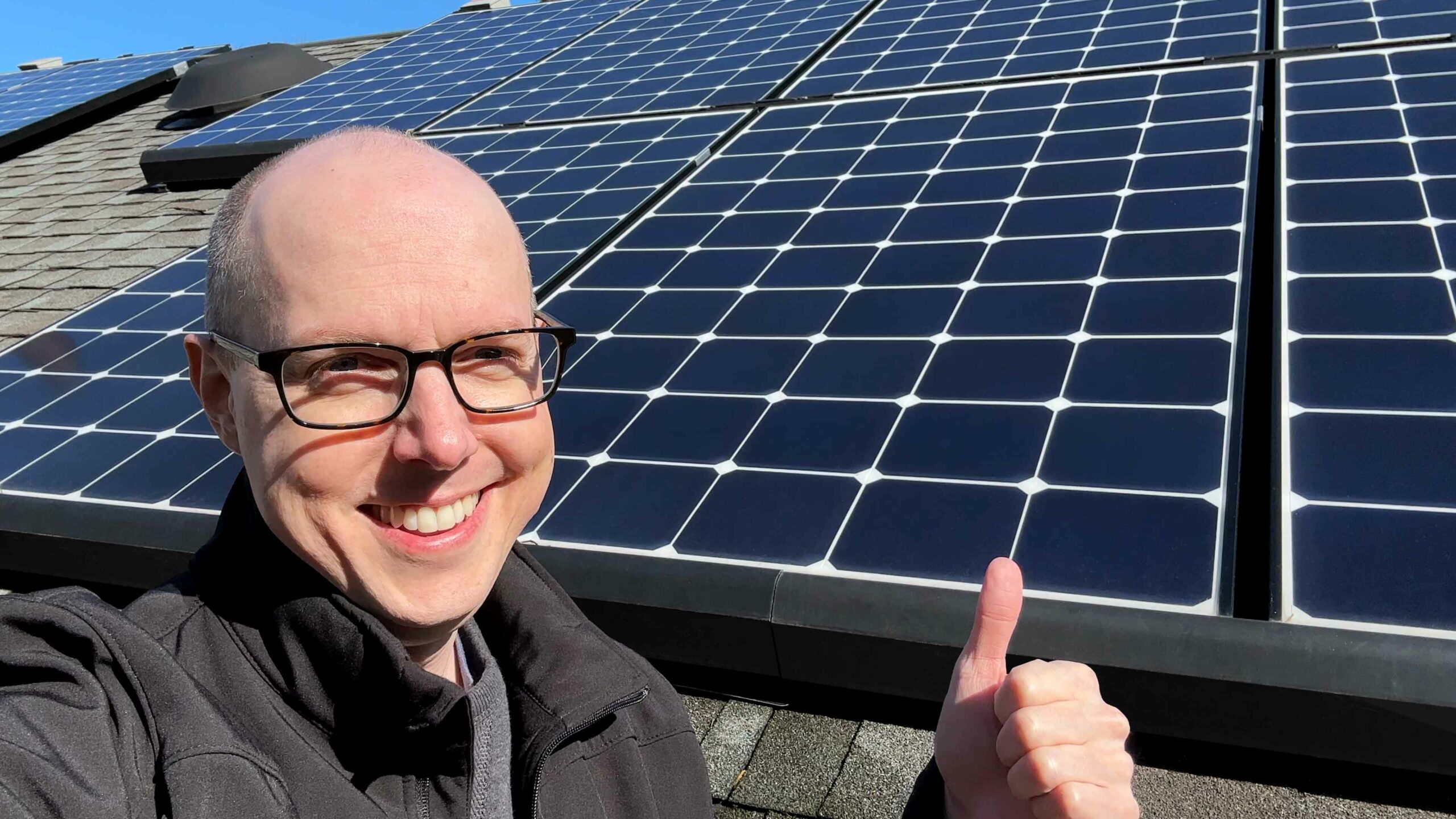

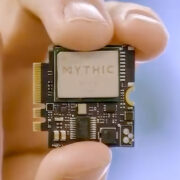


Comments